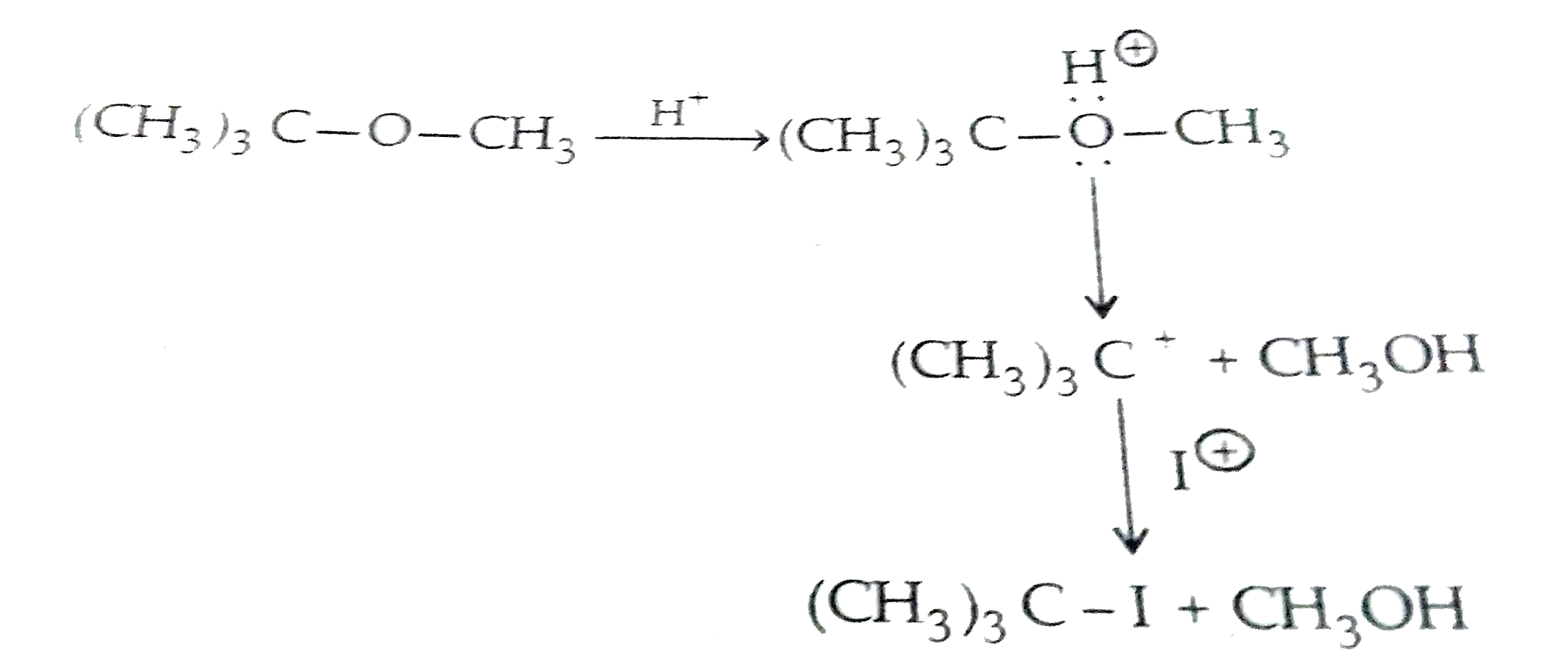Give reasons for the following :
(i) Phenol is more acidic than methanol.
(ii) The C-O-H bond angle in alcohols is slightly less than the tetrahedral angle (109∘28').
(iii) (CH3)3C−O−CH3 on reaction with HI gives (CH3)3C−IandCH3−OH as the main products and not (CH3)3C−OHandCH3−I.
(i) When phenol lose the penolate ion is stabilized due to the resonance effect. The energy of the dissociated form is lower and so the phenol has more chance to be in the solution dissociated with the phenolate ion. Aliphatic alcohol are not stabilized by resonance so they are not very prone to be dissociated.

(ii) The C-O-H bond angle in alcohol is slightly less than the tetrahedral angle (109∘28). It is due to the repulsion between the unshared electron pairs of oxygen.

S slightly greater than the tetrahedral angle (109∘28) due to the repulsive C-O bond length (141 pm) in ethers is almost the same as in alcohols (142 pm) in methanol.
(iii) Usually, iodide being a big nucleophile, attacks on the group with low steric hindrance and the reaction proceeds by SN2 mechanism. However, in this case, methanol, on leaving generates a tertiary carbocation, which is more stable. Hence, this reaction proceeds by SN1 mechanism and therefore, we get (CH3)3C−IandCH3−CH as the major products.

Similar Questions
(CH3)3C−OCH3 on reaction with HI gives (CH3)3C−IandCH3−OH as the main products and not (CH3)3C−OHandCH3−I. Explain.
View SolutionAnisole on reaction with HI gives phenol and CH3−I as the main products and not iodobenzene and CH3OH. Assign reasons.
View Solution(CH3)3C−Br on reaction with sodium methoxide (Na+O−CH3) gives alkene as the main product and not an ether.
Assign reason.
View SolutionCH3−CH2−CH2−O−CH3 and CH3−CH3∣CH−O−CH3 are
View Solution(CH3(OH)+2) is..acidic than (CH3NH+3).
View SolutionFollowing reaction:
(CH3)3C−Br+H2O→(CH3)3C−OH+HBr is an example of -
View SolutionIndicate the σ&π bonds in
(i) CH2Cl2
(ii) CH3−C≡C−CH3
View SolutionPredict the products of the following reactions :
(i) CH3−CH2−CH2−O−CH3+HBr→
(ii)
(iii)
(iv) (CH3)3C−OC2H5+HI→
View SolutionArrange the following alcohols in order of increasing reactivity towards sodium metal.
(i) CH3OH
(ii) (CH3)2CH−OH
(iii) CH3CH2OH
(iv) (CH3)3C−OH
View SolutionState the products of the following reactions
(i) CH3−CH2−CH2−OCH3+HI→
(ii)
(iii) (CH3)3C−OCH3+HI
View Solution
